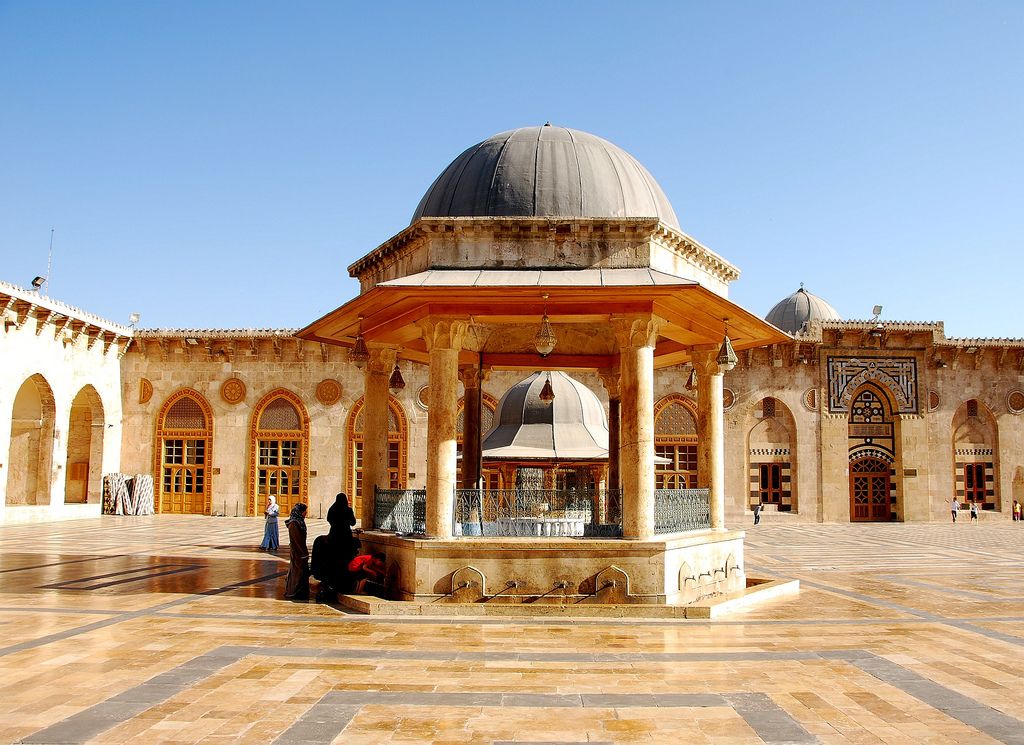Aleppo Umayyad Mosque : One of the most remarkable Islamic monuments in the Middle East, the Great Mosque of Aleppo, also known as the Aleppo Umayyad Mosque, stands as a silent witness to centuries of prayer, conflict, and cultural evolution. Located in the heart of Aleppo’s ancient walled city, this mosque is not just a place of worship—it is a profound symbol of Syria’s historical, religious, and architectural heritage.
Visiting this majestic structure offers a unique opportunity to explore one of the oldest and most influential Islamic sites in the world. The Aleppo Umayyad Mosque has long represented the spiritual and cultural identity of the city, attracting visitors, scholars, and worshippers alike. Despite the damage it suffered in recent conflicts, efforts to restore the Aleppo Umayyad Mosque are ongoing, and it remains an unforgettable stop for those exploring the story of Aleppo.
Aleppo Umayyad Mosque | Quick Info.
| Topic | Quick Info |
|---|---|
| Name | The Great Mosque of Aleppo / جامع حلب الكبير (also known as the Umayyad Mosque of Aleppo) |
| Location | Old City of Aleppo, Syria |
| Founded / Built | Originally built in the 8th century CE (Umayyad period), rebuilt and expanded in the 11th–13th centuries |
| Founder / Patron | Initially commissioned by Caliph al-Walid I of the Umayyad dynasty |
| Architectural Style | Early Islamic and later Seljuk and Mamluk influences |
| Key Features | Large courtyard, elegant minaret (destroyed in 2013), marble facades, intricate arches, and the shrine of Prophet Zakariya (Zechariah) |
| Significance | One of the oldest and most important mosques in the Islamic world, a UNESCO World Heritage Site within Aleppo’s Old City |
| Current Status | Severely damaged during the Syrian conflict; restoration efforts are ongoing to preserve its historic and spiritual legacy |
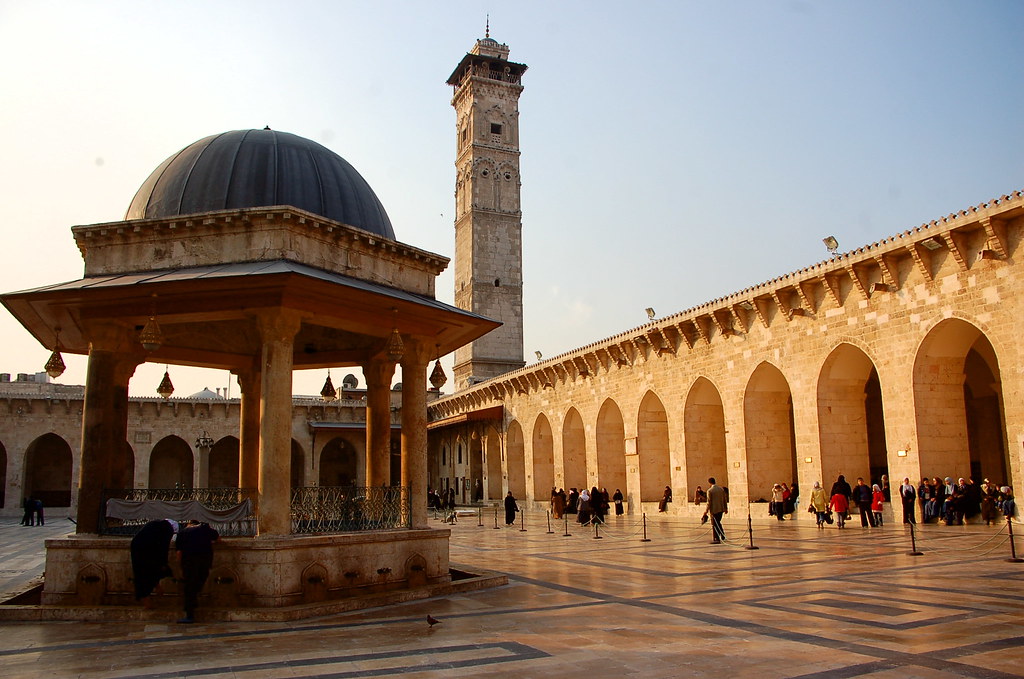
Aleppo Umayyad Mosque is among the oldest mosques in Syria, rivaling the Umayyad Mosque of Damascus in historical and spiritual significance. Its large courtyard, monumental minaret, and layered history reflect a blend of Umayyad, Seljuk, Ayyubid, Mamluk, and Ottoman architectural influences.
Built over ancient Roman foundations, the mosque has evolved over time—reconstructed, renovated, and repaired across dynasties. Despite destruction during the Syrian Civil War, it remains a sacred and deeply meaningful site for Muslims and historians alike.
Historical Background
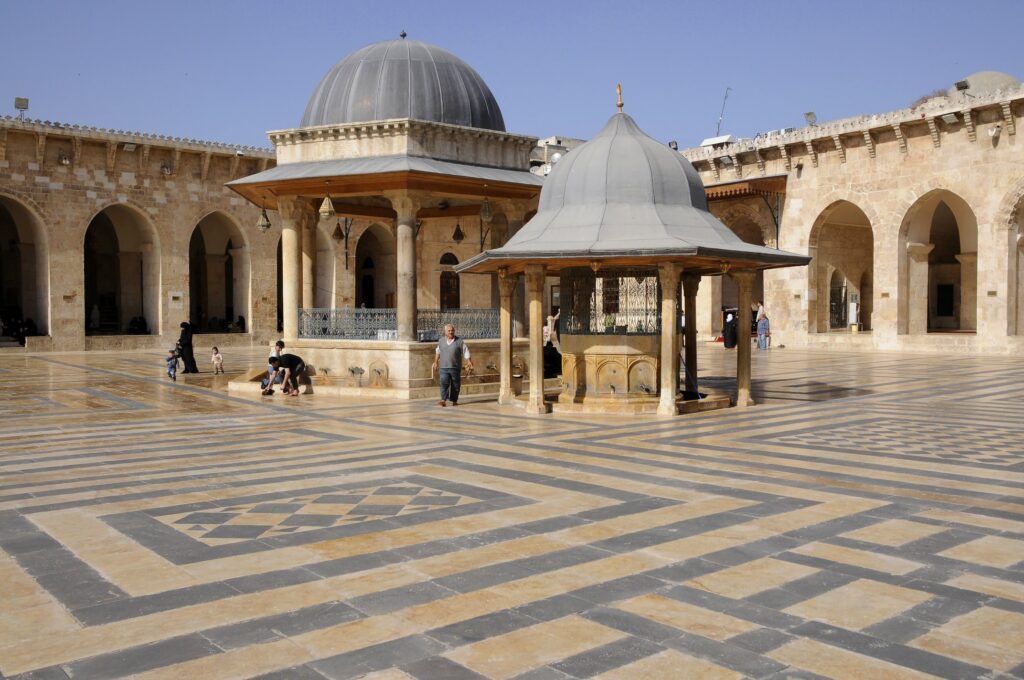
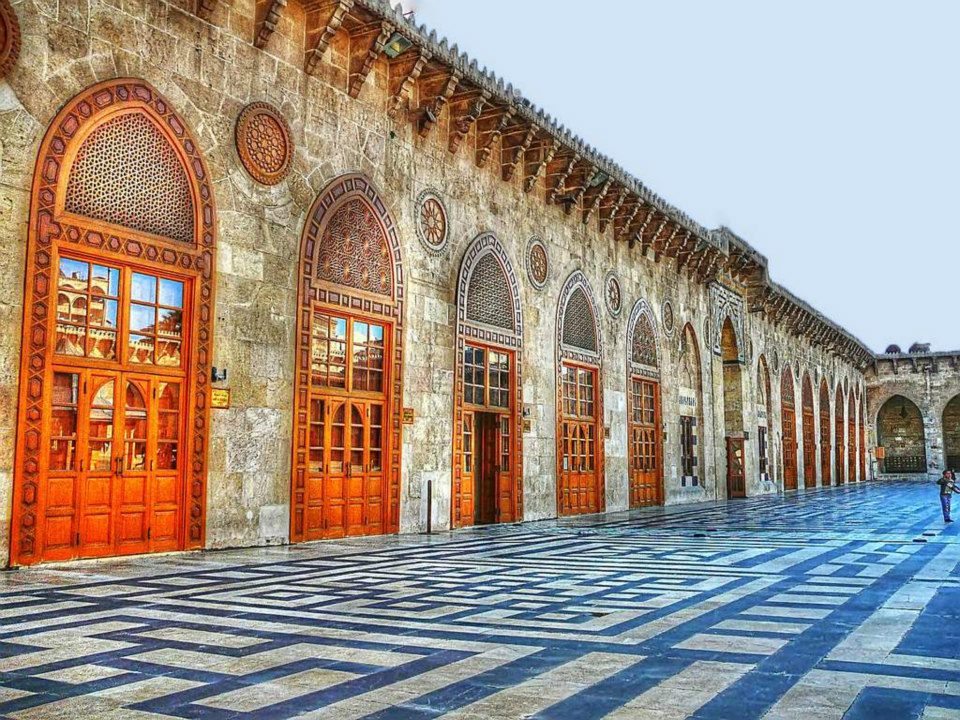
Umayyad Foundations
The mosque was initially constructed during the Umayyad Caliphate, around 715–717 CE, under the orders of Caliph al-Walid I or possibly his successor Sulayman ibn Abd al-Malik. It was modeled on the Umayyad Mosque in Damascus and built on a site that previously held a Roman temple and a Byzantine cathedral—an architectural layering that reveals Aleppo’s multi-religious past.
Seljuk and Ayyubid Periods
In 1090 CE, the mosque was severely damaged by fire and subsequently restored by the Seljuk ruler Malik-Shah, with further enhancements by the Zengid and Ayyubid dynasties. During this period, the prayer hall and dome were rebuilt, and new decorative elements were introduced.
The mosque gained prominence as a center of Islamic learning and jurisprudence. Scholars from around the Islamic world visited and taught here, enriching Aleppo’s intellectual life.
The Minaret: A Masterpiece Lost
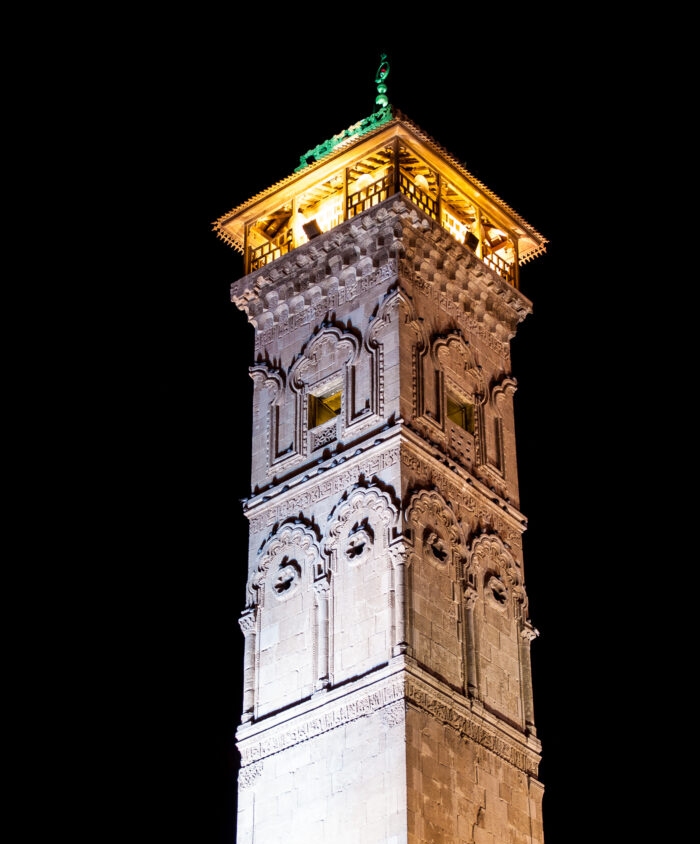
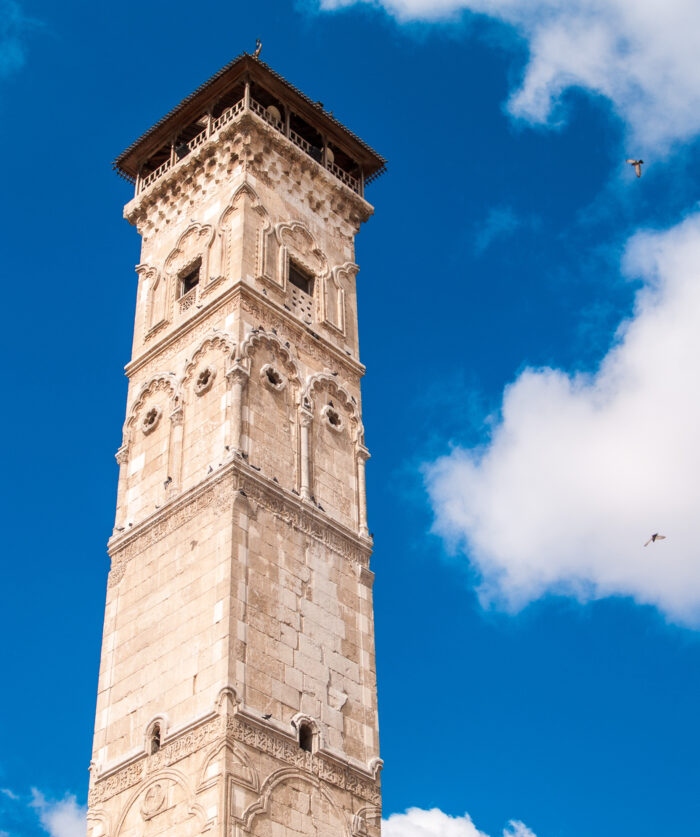
Perhaps the most iconic feature of the Great Mosque was its 45-meter-high minaret, completed in 1090 CE. Decorated with Kufic inscriptions and stone carvings, the minaret was a masterpiece of Seljuk architecture. Sadly, it collapsed during fighting in April 2013, a heartbreaking moment for Syrians and heritage lovers worldwide.
Reconstruction efforts are now underway to restore the minaret using original materials recovered from the ruins.
Ottoman Renovations
During the Ottoman period, the mosque underwent several restorations. The Ottomans preserved much of the mosque’s earlier design but added elements such as new decorative tile work and repairs to the courtyard arcades. The mosque retained its function as a key religious center throughout Ottoman rule and into the modern era.
Architectural Highlights
The Courtyard
The Aleppo Umayyad Mosque features a vast marble-paved courtyard, a stunning open space surrounded by elegant arcades. It once served as a gathering place for worshippers, students, and travelers, reflecting the social and spiritual heart of the city. The arcade walls of the Aleppo Umayyad Mosque display intricate muqarnas carvings and Arabic inscriptions that blend religious texts with artistic detail.
At the center of the courtyard stands a large ablution fountain, where worshippers perform wudu (ritual washing) before prayer, adding both function and beauty to this historic sanctuary.
The Prayer Hall
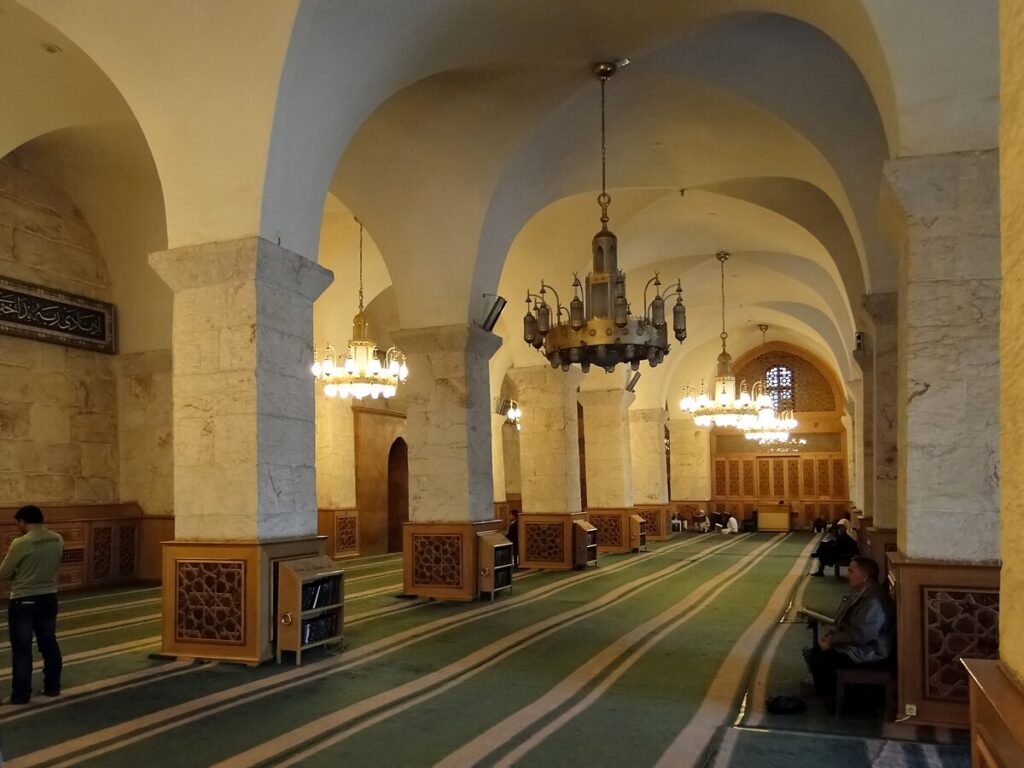
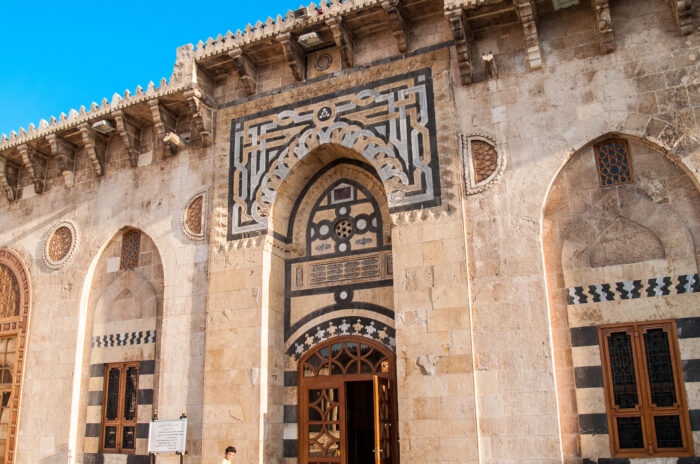
The prayer hall is located on the southern side of the courtyard. Its large size, intricate mihrab (prayer niche), and wooden minbar (pulpit) reflected the grandeur and spiritual authority of the mosque.
- Mihrab: Richly decorated and facing Mecca, the mihrab is a focal point for prayer.
- Minbar: The pulpit from which Friday sermons are delivered; a beautifully carved example of Islamic woodworking.
Although portions of the prayer hall were damaged during the war, key structural features remain and are being restored.
The Minaret
While currently missing, the Seljuk minaret was one of the most admired in the Islamic world. Its detailed stonework, geometric patterns, and Kufic inscriptions told the story of its time. Syrian experts are using historical records and surviving stones to reconstruct it as faithfully as possible.
Tomb of Prophet Zechariah
The mosque houses what is believed to be the tomb of Prophet Zechariah, the father of John the Baptist (Prophet Yahya in Islam). This shrine within the mosque is a pilgrimage site for Muslims and also revered in Christian traditions.
Visiting Aleppo Umayyad Mosque
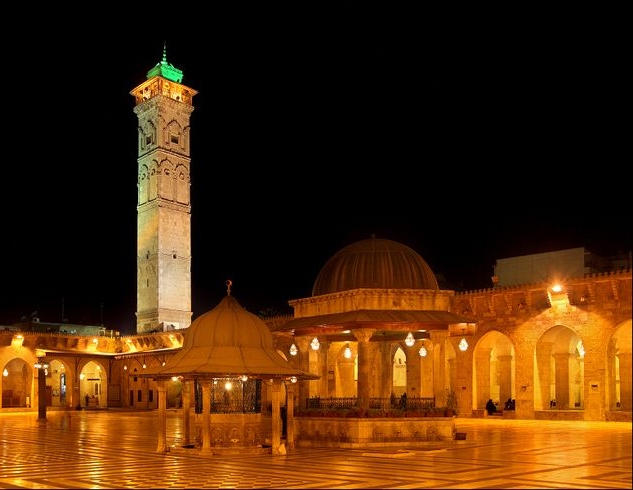
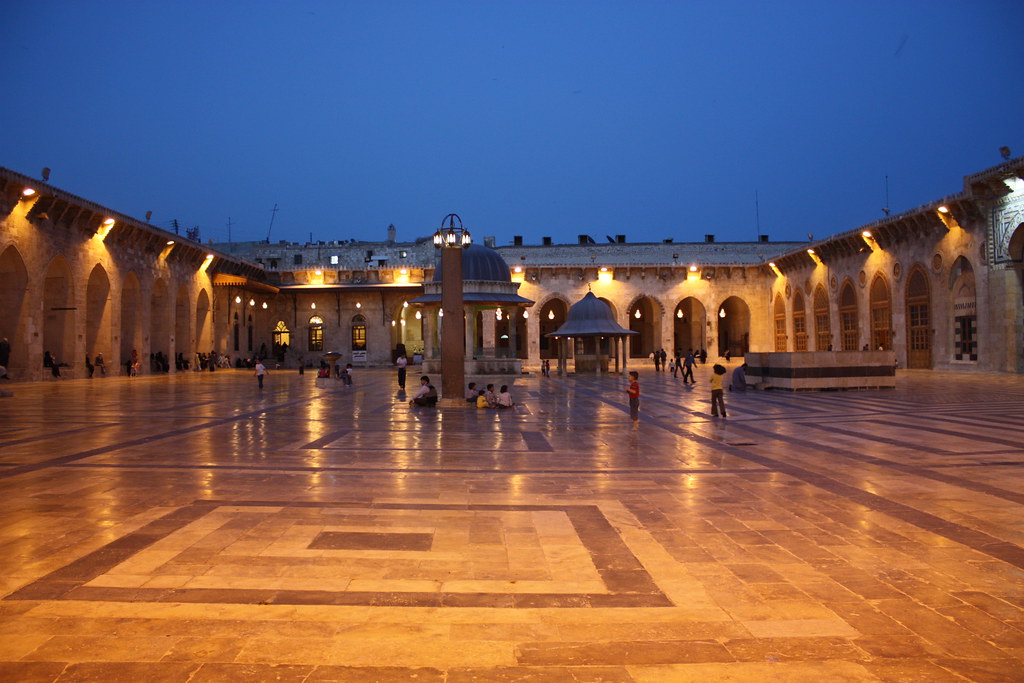
Location
The mosque is located in the Old City of Aleppo, a UNESCO World Heritage Site. It is adjacent to the famous Aleppo Souq (Souk al-Madina) and not far from the Aleppo Citadel—making it part of a rich and walkable historical district.
Opening Hours and Entry
- Entry fee: Typically free, though local authorities may ask for donations during restoration efforts.
- Visiting hours: Best to visit in the morning or early afternoon. Friday prayers draw large crowds, so tourists should plan accordingly.
- Dress code: Modest clothing is required. Women should cover their hair, and men should avoid shorts. Scarves are often provided at the entrance.
Guided Tours
Hiring a local guide can deeply enrich your experience. Many guides are former residents or historians who share touching stories of the mosque’s past and present.
Restoration and Access
As of recent years, restoration work is still underway. Some sections may be closed or under scaffolding. However, visitors are usually allowed access to the courtyard and prayer hall.
Always check the current travel advisories and consult with local contacts or tour operators regarding safety and access.
Tips for Tourists
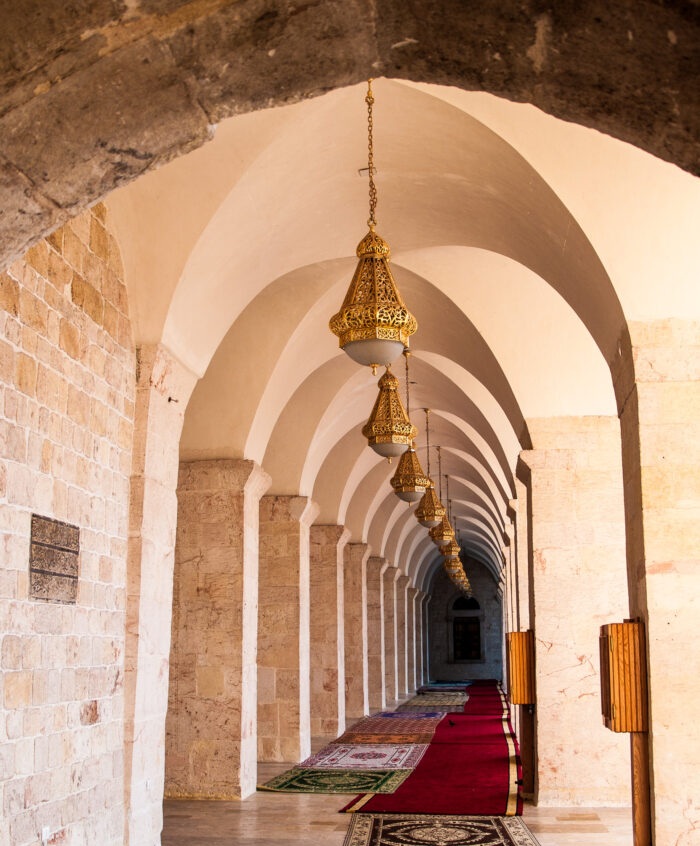
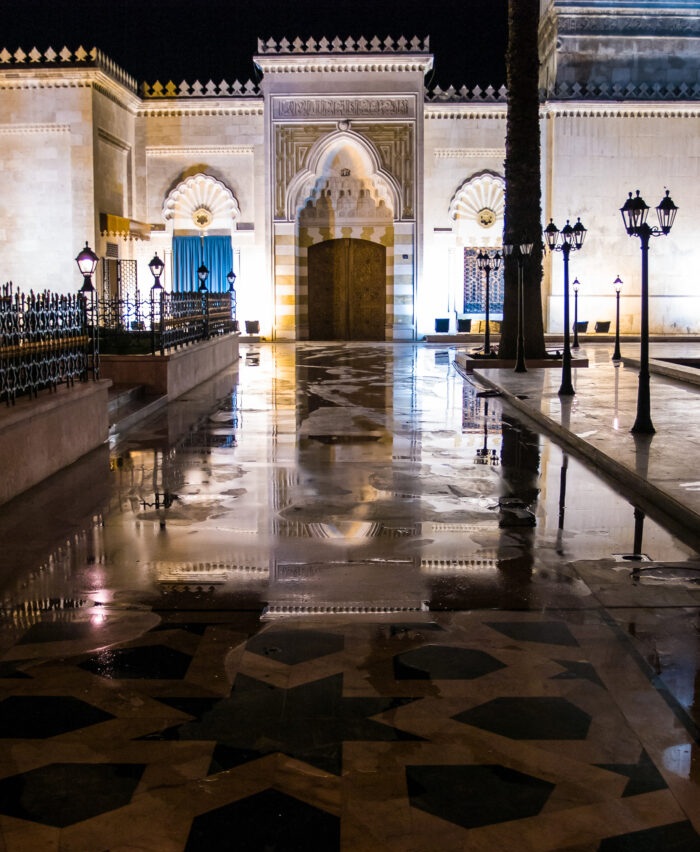
Respect the Sacred Space
The mosque is an active place of worship. Maintain silence, avoid photography during prayer, and show respect to those in prayer. Shoes must be removed before entering prayer areas.
Learn Before You Go
Reading a bit about Islamic architecture, the Umayyad dynasty, or Aleppo’s history can make your visit far more meaningful. A simple background helps you recognize the importance of design elements like arches, domes, and inscriptions.
Combine With Nearby Attractions
The Great Mosque is close to many historic spots in Old Aleppo:
- Aleppo Citadel
- Khan al-Wazir
- Souk al-Madina
- Al-Shibani Church and School
These sites collectively showcase Aleppo’s diverse cultural and religious legacy.
Symbol of Endurance
Despite the severe damage during Syria’s civil war, the Great Mosque of Aleppo, also known as the Aleppo Umayyad Mosque, remains a symbol of hope and resilience. It represents not just the Islamic heritage of Syria, but also the shared history of civilizations that passed through this ancient city—from the Greeks and Romans to the Arabs, Turks, and modern Syrians.
The ongoing restoration of the Aleppo Umayyad Mosque is not just about stones and minarets. It is about reviving a city’s heart, honoring its past, and preparing it for a new chapter.
Final Thoughts
A visit to the Great Mosque of Aleppo, also known as the Aleppo Umayyad Mosque, is a profound experience. Beyond its stunning architecture, it offers a connection to centuries of faith, scholarship, and culture. Whether you’re a historian, a traveler, or someone seeking spiritual beauty, the Aleppo Umayyad Mosque speaks to the enduring soul of Aleppo.
As the sounds of prayer return and life gradually fills its ancient halls, the Aleppo Umayyad Mosque stands as a timeless reminder that even in ruins, faith and history stand tall.
Finally.. If you have any questions, please contact us. To explore further, visit our Facebook Syria collection for rare images and cultural highlights.
Sources & References:
UNESCO – World Heritage Centre: https://whc.unesco.org
Archnet – Architecture & Heritage Database: https://www.archnet.org
World History Encyclopedia: https://www.worldhistory.org
Syrian Heritage Archive Project: https://syrian-heritage.org
Global Encyclopedia: Wikipedia



